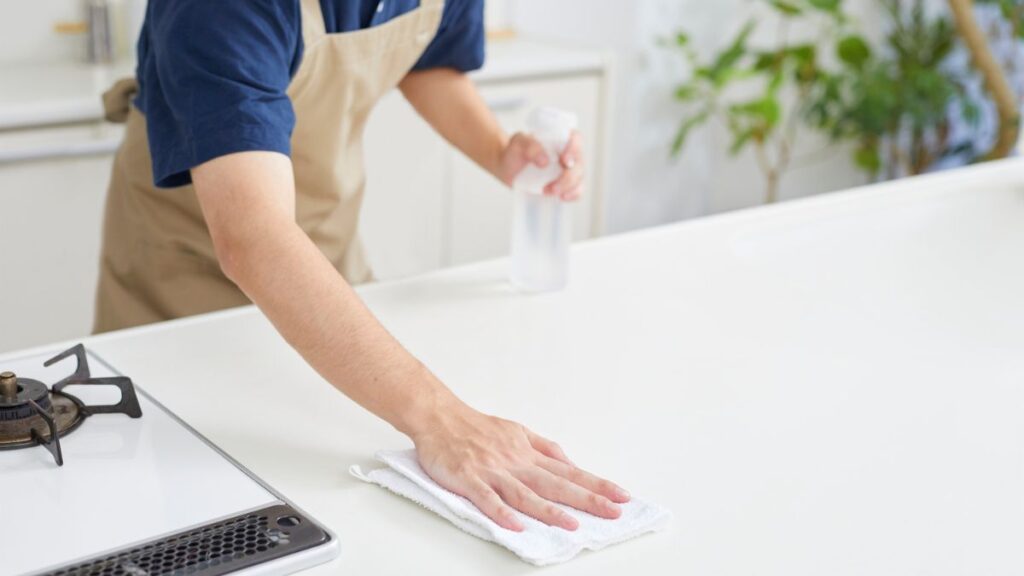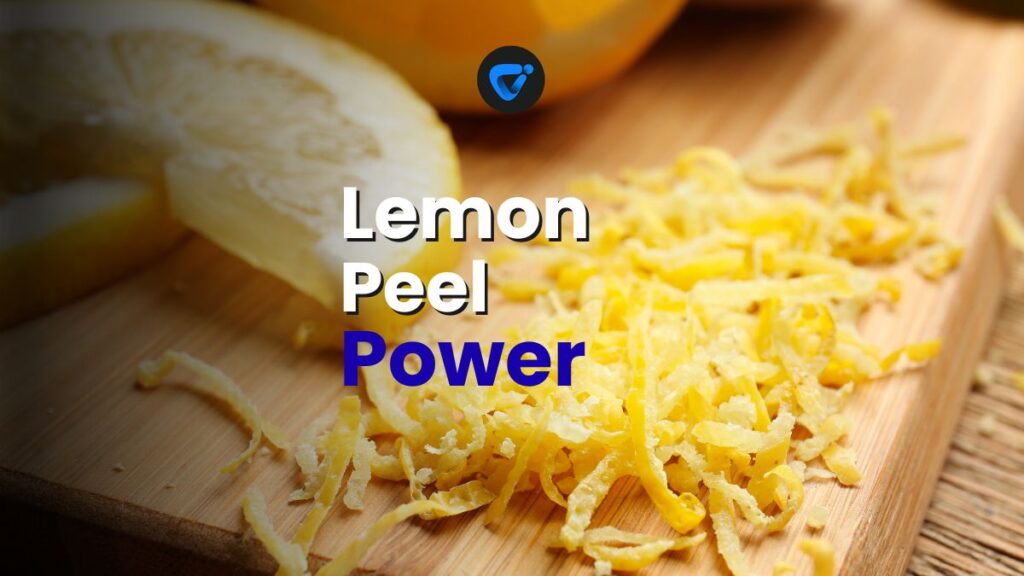
Building a DIY eco station with refillable spray bottles isn’t complicated or expensive. It delivers daily satisfaction—less trash, more control over products, and a hands-on way to support sustainability. Everyone can benefit without sacrificing cleaning power or convenience.

Post-Party Cleanup: Fast Track to Normalcy at Home
Party’s over? Get your home spotless fast! Follow our post-party cleanup guide to restore order and freshness in no time.
This guide dives into every essential for an organized and efficient home cleaning project station. By the last section, you’ll have actionable steps and checklists tailored for any household. Let’s discover the smarter side of cleaning with eco-friendly gear.
Organizing Essentials: Laying the Groundwork for Refillable Spray Bottle Success
Begin a home cleaning overhaul with refocus: decide where your refillable spray bottles will live. A dedicated eco station means less clutter and streamlined access at a glance. Try picturing a tidy shelf or basket in your laundry room or kitchen.
Sorting supplies early avoids late-night rummaging for the right cleaner. Assign one area to store every bottle, ingredient, and cleaning cloth. That way, family or housemates never need to ask what goes where—they’ll see it, grab it, and use it properly.
Choose Your Station Location for Daily Flow
Set your eco station within arm’s reach of where you clean most—under the sink, by the washer, or near cleaning zones. For example, someone who sweeps spills may use a countertop tray with three labeled refillable spray bottles.
Visibility helps form habits. Hang a small pegboard or wall rack where bottles are always visible but secure from children or pets. Pair with a list of what’s inside each bottle to avoid mystery solutions and to speed up grab-and-go cleanups.
If mornings feel rushed, stationing bottles by the entry lets you spot clean on the way to work. The result: consistent routines, no extra trips around the house, and a more peaceful mindset before the day even starts.
Labeling: Keep Clarity and Avoid Mix-Ups
Printed or handwritten labels stop guessing games. Stick a waterproof label on every refillable spray bottle that includes the cleaner’s name and main ingredients. This solves confusion if two bottles look the same.
Color-coding is another effective trick. Assign one color marker or cap for bathroom cleaners and another for kitchen spray. If you share chores, everyone instantly knows which bottle suits which job without stopping to sniff the liquid.
Even simple tape works well. Update labels after each refill to keep family on track and products fresh. These small habits remove friction and speed up every cleaning session.
| Station Feature | Location Ideas | Benefits | Next Step |
|---|---|---|---|
| Shelf Organizer | Laundry Room | Consolidates bottles and microfiber cloths | Mount on wall for easy reach |
| Bottle Caddy | Kitchen | Portable and flexible for fast surface changes | Place under sink near trash bin |
| Pegboard Hooks | Garage/Mudroom | Keeps bottles upright, away from floors | Install hooks with label holders |
| Drawer System | Bathroom Closet | Reduces visible clutter and risk of spills | Use drawer dividers for cleaning categories |
| Oversize Tray | Walk-In Pantry | Centralizes ingredients, bottles, and backup supplies | Add a checklist for quick inventory |
Stocking Up: Choosing Bottles and Cleaners for Peak Performance
Quality matters more than looks. Selecting the best refillable spray bottles prevents leaks and ensures long-term reliability in your eco station. That means looking for sturdy materials and ergonomic designs that don’t strain your hands.
Pair bottles with effective, safe cleaners. Start simple: vinegar sprays, diluted castile soap, or plant-based disinfectants. Choose formulas that work well in the refillable spray bottles you’ve chosen, avoiding harsh chemicals that can wreck plastic or trigger pump clogs.
Key Considerations for Refillable Spray Bottle Selection
Opt for BPA-free plastic or glass for safe, clean storage and longer use. Prioritize bottles with adjustable nozzles, letting you switch from misting to direct stream on demand. If you clean frequently, select a bottle with a lightly textured grip.
- Pick wide-mouth bottles to make refilling spill-proof and less messy.
- Test the trigger—smooth, consistent action prevents hand fatigue during big jobs.
- Choose a size that fits both your grip and storage slot; 16 to 32 ounces covers most tasks.
- Look for measurement markings for quick ingredient ratios—handy with DIY recipes and batching cleaners.
- Consider shatter-resistant glass for high-traffic spaces if drops are a risk.
Once bottles are chosen, their longevity depends on steady, correct use and an upfront cleaning routine. Always rinse before each refill to keep the inside fresh and streak-free.
DIY Cleaner Ingredients to Avoid Build-Up
Vinegar, distilled water, and castile soap make a powerful basic trio for your starter station. Add tea tree or lemon oil for a natural scent and extra surface cleaning power. Use caution with essential oils—some can gum up sprays with residue.
- Mix white vinegar and water for windows and glass—no streaks and fast drying.
- Add a tablespoon of castile soap to warm water for multi-surface wipe-downs that don’t need rinsing.
- Try equal parts rubbing alcohol and water for disinfecting high-touch spots like doorknobs or remotes.
- Blend a drop or two of citrus oil for pleasant aroma and kitchen degreasing—a little goes a long way.
- Steer clear of bleach, as it quickly degrades refillable spray bottle parts and can corrode metal springs in triggers.
Label each blend clearly and tighten lids after every refill to limit evaporation or accidental spills. A careful setup today saves time and mess later.
Filling Techniques for Hassle-Free Refills and Consistent Mixing
Effortless refilling guarantees you’ll stick with your eco station plan. Each refill should take less than a minute for most common mixtures. Organize your process so everything you need fits within reach, and interruptions are unlikely.
For example, store your bulk vinegar jug and soap next to the refillable spray bottles. Familiarize yourself with bottle capacities so you can combine water and ingredients without overflows or waste.
Step-by-Step for Fast, No-Mess Refills
Unscrew the bottle top gently and use a funnel for accuracy. Pour ingredients slowly if they foam, like soap. Stop when markings indicate the desired volume—this helps recipes perform at their best and avoids dilution mistakes.
Replace the trigger top firmly, holding the bottle upright. Swirl or invert gently a couple of times for thorough blending. If sediment settles after a few hours, a quick shake before spraying works well for most solutions.
Wipe bottle exteriors before returning them to their eco station, especially if slippery recipes spill. Immediately relabel if you change formulas to prevent confusion during your next use.
Preventing Cross-Contamination Between Cleaners
Always rinse refillable spray bottles with warm, soapy water before switching to a new recipe. Residual cleaner can alter the next batch’s scent or cleaning action, which sometimes leads to sticky or streaky results.
Allow bottles to air-dry with the tops off to keep the inside fresh and prevent lingering odors. For extra assurance, fill with plain water, spray a few times, and then empty before refilling with your chosen mix.
Sanitize glass bottles with vinegar between refills if you notice lingering smells. This routine ensures each cleaning project uses a pure, effective formula and helps extend bottle life.
Building Routine: Integrating Your Eco Station Into Everyday Cleaning
To achieve maximum impact, treat your refillable spray bottle eco station as the hub of your cleaning routine. Place it where your eyes land during ordinary chores, and develop a muscle memory for reaching for it first.
Everyday triggers help too. For instance, keep bottles near the kitchen counter so you can spray and wipe spills while prepping food. Even a five-minute daily ritual makes a visible difference over a week.
Troubleshooting: What to Do When Bottles Lose Pressure
Clogs occur if bits of ingredient settle in pump nozzles. Rinse triggers in hot water, pump a few times, and shake. Replace triggers if cleaning doesn’t restore flow, especially with sticky cleaners.
Some bottles lose suction due to loose gaskets. Inspect and tighten components before giving up on an otherwise sturdy spray. If body cracks appear, transfer the mix right away to avoid leaks or wasted product.
If the spray pattern weakens but no clog is visible, check for dried residues inside the straw. Soaking overnight (separate from the bottle) usually clears the path and restores normal spray action for the next cleaning run.
Quick Start Guide for Family and Housemates
Write a one-minute chalkboard script: “Grab the blue for bathroom, green for kitchen—spray then wipe.” Pin it above your eco station. Demonstrate the bottling up process the first time someone helps out.
Keep a refill checklist to avoid gaps between cleanings. Encourage users to leave empty bottles in a “to refill” bin so the next cleaning run is never interrupted. This single extra habit stops frustration cold.
Praise kids or roommates when they place bottles back in their nested homes. Many stick better to green routines if it feels communal. Creating a smooth, visible flow supports household harmony and responsibility.
Conclusion: Transforming Cleaning Habits with Refillable Solutions
Refillable spray bottles turn boring cleaning tasks into a low-waste, empowering process. Setting up an eco station grounds daily routines in responsibility and tangible eco-impact with every refill and swipe.
Tweaks such as better labeling, storage, and encouraging shared participation ensure every family member benefits. When routines run smoothly, cleaning feels lighter and more consistent across every corner of your space.
Keep refining your setup, exploring new cleaning blends, and adapting bottle placement. Small changes compound; your home and lifestyle both get noticeably fresher—one refill at a time.
Frequently Asked Questions
Most homemade or plant-based cleaners work safely. Stick to diluted solutions—like vinegar, water, and mild soap. Avoid bleach or strong acids, which can corrode bottle parts and decrease their longevity.
Laminate labels or use waterproof markers and tape. Write the date of refilling for freshness. If using essential oils, place the label higher to avoid oil seepage erasing your writing.
Yes. One reusable bottle replaces dozens of empty single-use containers over a year. The impact is noticeable in reduced landfill waste, budget savings, and fewer shopping trips for new bottles.
Filter DIY mixtures through a fine mesh if powders or pulp are present. Rinse spray heads monthly. Don’t use thick oils or undiluted soaps, which have a higher chance of blocking the trigger mechanism initially.
Position your eco station within easy reach of common mess zones. Reserve five minutes daily or after each meal for a rapid surface wipe. Encourage everyone to return bottles promptly for a seamless, low-stress routine.

Lemon Peels: The Hidden Powerhouse
Don’t toss those peels! Discover how lemon power can naturally clean, deodorize, and shine every corner of your home.


